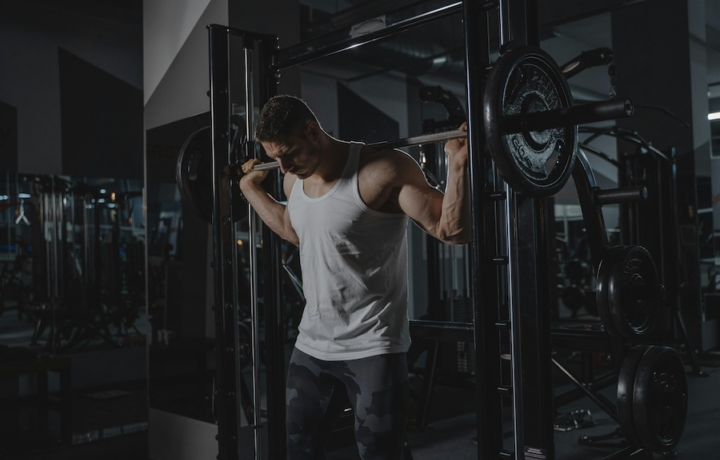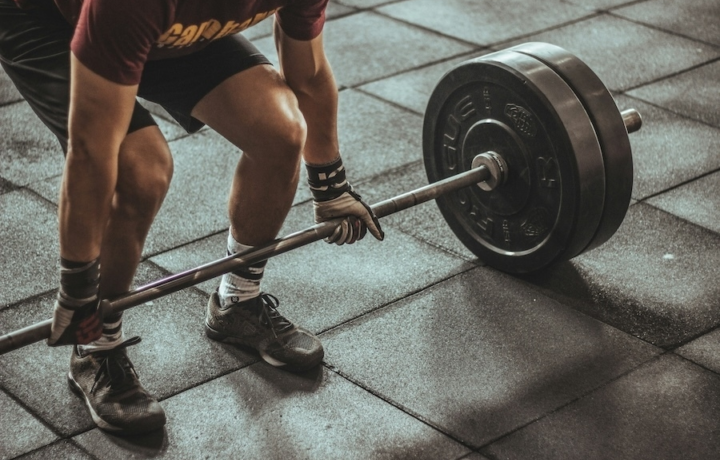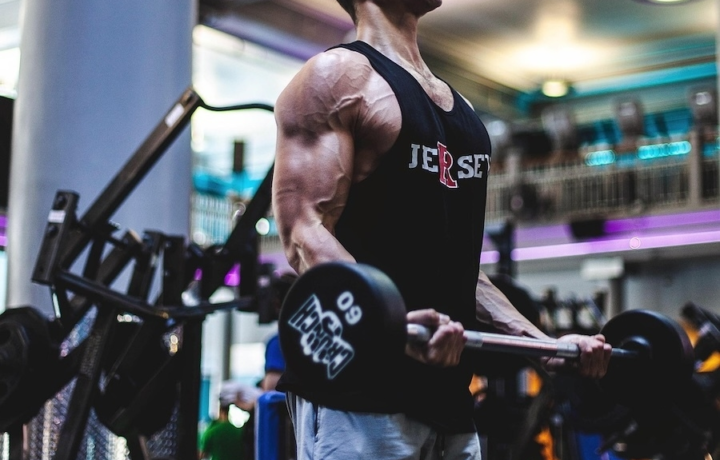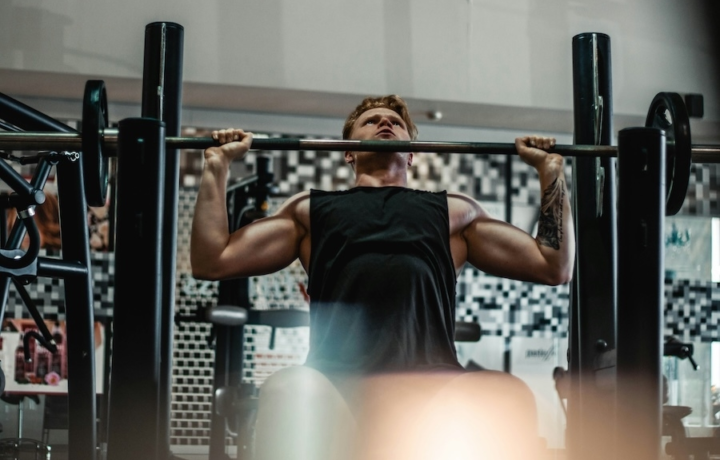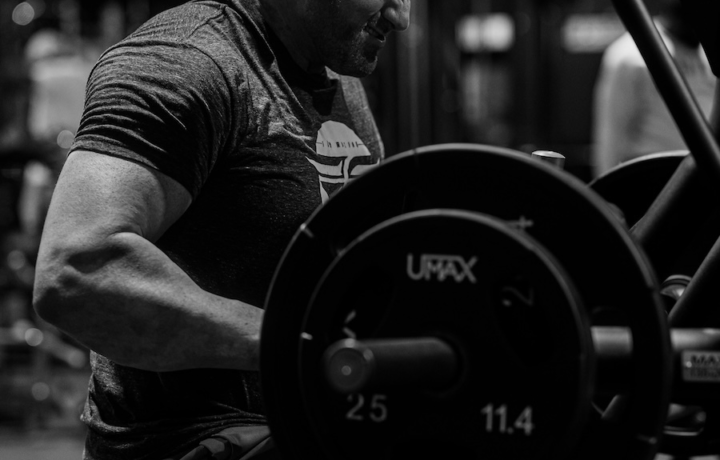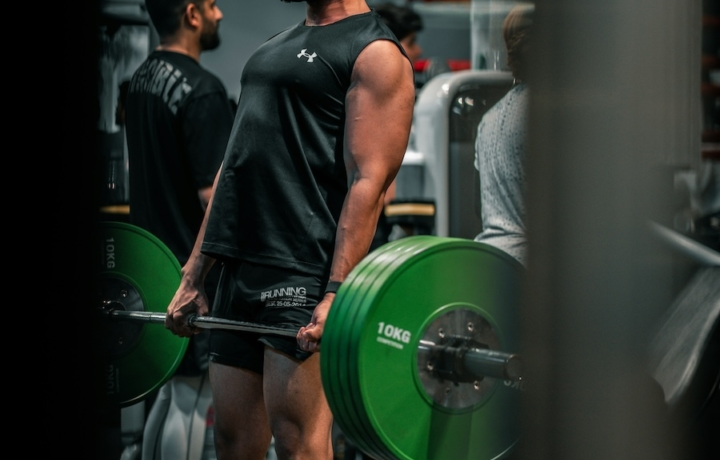Exercise
Barbell Romanian Deadlift

Barbell Romanian Deadlift
How to Perform
- Stand with feet hip-width apart, holding a barbell in front of your thighs with an overhand grip slightly wider than shoulder-width.
- Brace your core and maintain a neutral spine position while slightly bending your knees to establish your starting position.
- Inhale and initiate the movement by hinging at your hips, pushing your buttocks backward while keeping your back flat and shoulders retracted.
- Lower the barbell by sliding it down your thighs toward your feet, maintaining a slight bend in your knees throughout the movement.
- Continue the descent until you feel a stretch in your hamstrings, typically when your torso is nearly parallel to the floor and the barbell is around mid-shin level.
- Maintain a strong grip on the barbell and keep your shoulder blades pulled together to protect your lower back during the entire range of motion.
- Exhale as you reverse the movement by driving your hips forward, engaging your hamstrings and glutes to return to the standing position.
- Keep the barbell close to your legs throughout the entire movement and fully extend your hips at the top position before beginning your next repetition.
Important information
- Keep your back flat and chest up throughout the entire movement—rounding your lower back significantly increases injury risk.
- Focus on the hip hinge pattern rather than squatting; your knees should bend only slightly while most of the movement comes from your hips.
- If you're new to this exercise, practice the movement pattern with just the barbell or even a wooden dowel before adding substantial weight.
- The barbell should remain in contact with your legs during the entire movement to maintain proper form and leverage.

Barbell Romanian Deadlift
Exercise Details
Primary Muscles
Muscle Groups
Mechanic
Risk Areas
Built for progress
Take the guesswork out of training
Create personalized AI-powered workout plans that evolve with you. Train smarter, track every rep and keep moving forward, one workout at a time.






The Barbell Romanian Deadlift, often abbreviated as RDL, stands as a cornerstone movement in strength training circles, particularly revered among intermediate lifters seeking to develop their posterior chain. This compound exercise primarily targets the hamstrings, glutes, and erector spinae, creating a synergistic effect that few other movements can replicate with such efficiency. Popularized in both powerlifting and bodybuilding communities, the RDL serves different yet complementary purposes across these disciplines. Powerlifters utilize this movement to strengthen the muscles critical for conventional deadlifts and squats, enhancing their competition lifts.
Bodybuilders, meanwhile, appreciate the RDL for its ability to sculpt and define the hamstrings and glutes with remarkable precision, creating that coveted lower body aesthetic. What distinguishes the Romanian Deadlift from its conventional counterpart is the emphasis on hip hinging rather than knee flexion. This subtle yet significant difference shifts the workload predominantly to the posterior chain, creating intense tension through the hamstrings at the bottom position of the movement. The constant tension maintained throughout the exercise makes it particularly effective for hypertrophy, while the controlled eccentric phase challenges even the strongest athletes. The beauty of the RDL lies in its versatility as both a strength and muscle-building tool. Progressive overload with this movement leads to substantial strength gains that transfer to athletic performance, from sprinting speed to jumping power. The exercise demands and develops impressive core stability, as the spine must remain neutral under load throughout the movement pattern.
For those pursuing serious strength goals, the Romanian Deadlift deserves a permanent place in your training regimen. While technically less complex than some compound movements, mastering the hip hinge pattern required for the RDL pays dividends across numerous aspects of physical performance. The exercise's remarkable efficiency in stimulating multiple major muscle groups simultaneously makes it an invaluable addition to any well-designed strength program.
FAQ - Barbell Romanian Deadlift
The Romanian Deadlift primarily targets the posterior chain, with major emphasis on the hamstrings, glutes, and erector spinae. Your lower back, traps, and grip strength are also significantly engaged as stabilizers throughout the movement.
The RDL emphasizes the hip hinge pattern with minimal knee bend, while conventional deadlifts involve greater knee flexion and lifting from the floor. RDLs maintain constant tension on the hamstrings and typically start from a standing position rather than lifting the weight from the ground.
The most common mistakes include rounding the lower back, bending the knees too much, not pushing the hips back far enough, and lowering the weight too far beyond mobility limits. Focus on maintaining a neutral spine, hinging at the hips, and only lowering the bar to mid-shin or where you feel a strong hamstring stretch.
For an easier variation, use dumbbells or a lighter barbell and focus on perfecting form with partial range of motion. To increase difficulty, add weight progressively, slow down the eccentric (lowering) phase, incorporate deficit RDLs (standing on a platform), or try single-leg variations to challenge stability.
Most lifters benefit from performing RDLs 1-2 times per week with at least 48 hours between sessions to allow for hamstring recovery. If you're also doing conventional deadlifts or other intensive hamstring work, consider scheduling RDLs on separate days to optimize recovery and performance.




